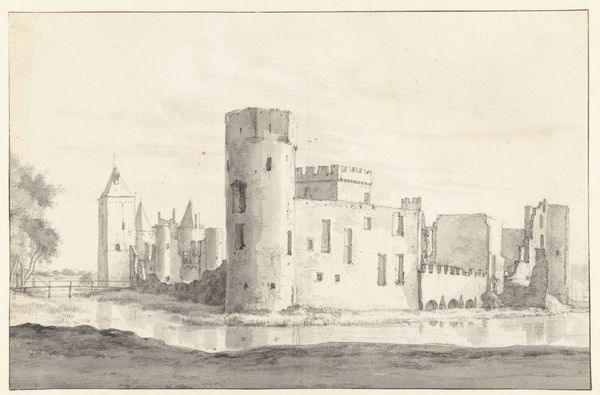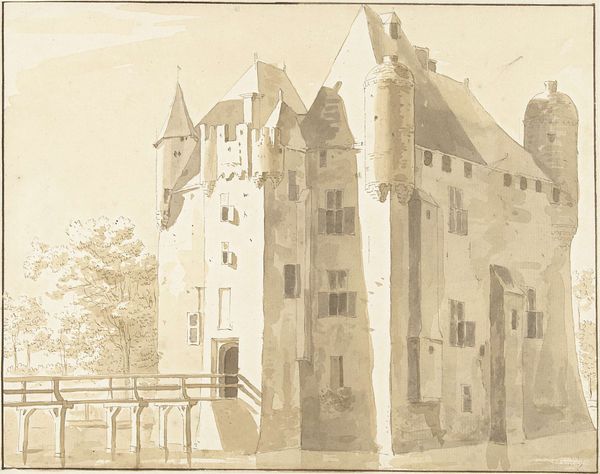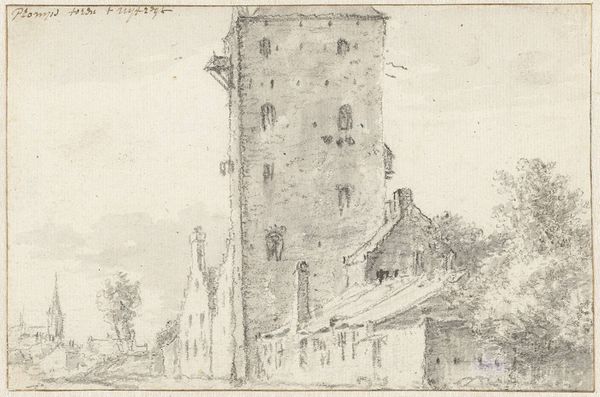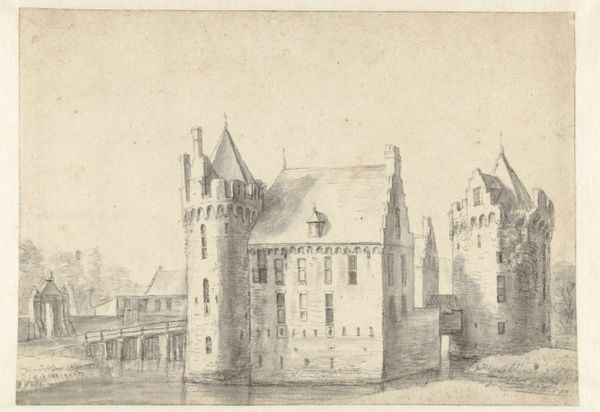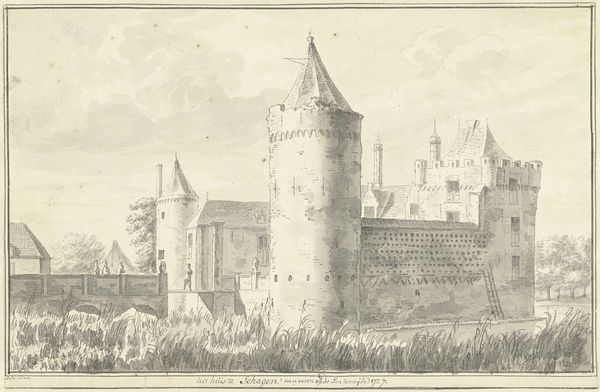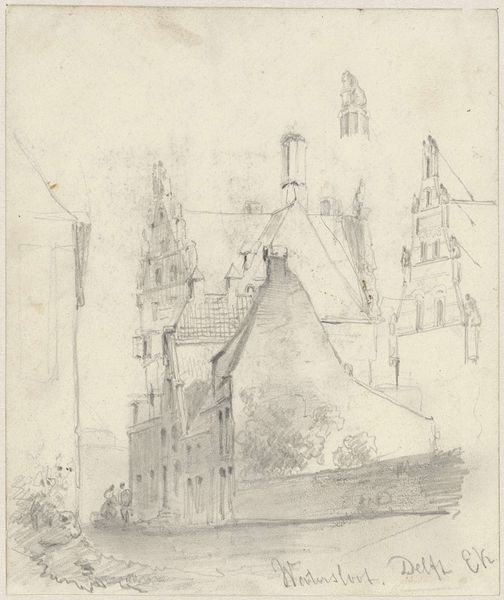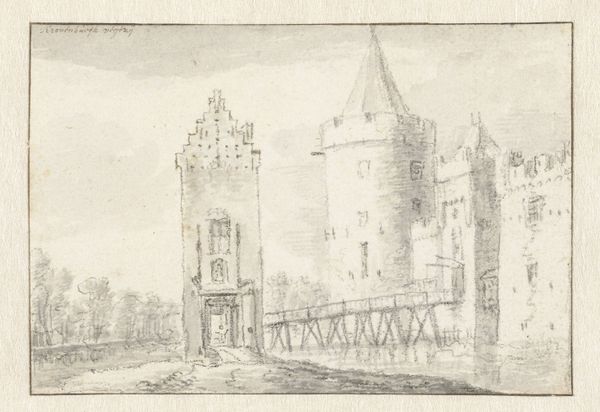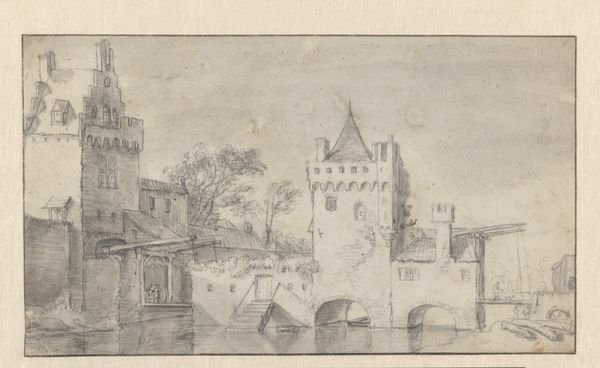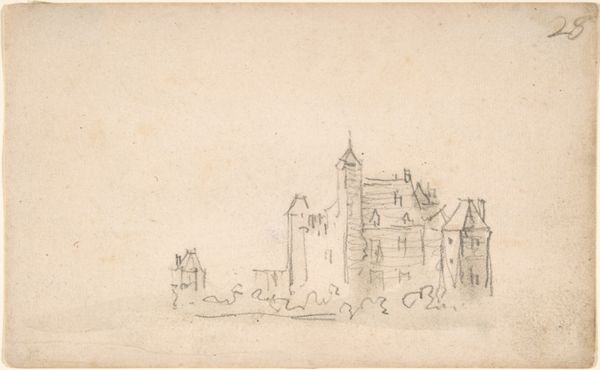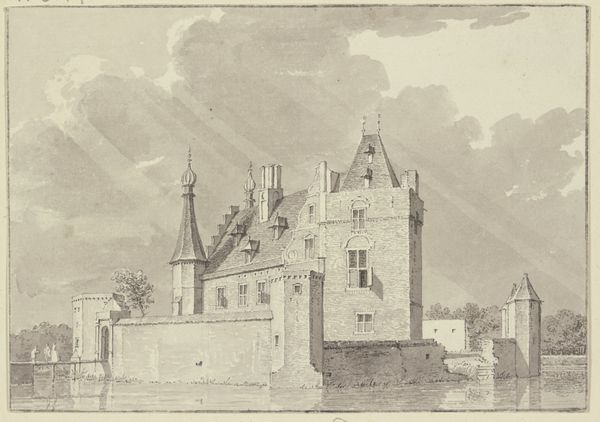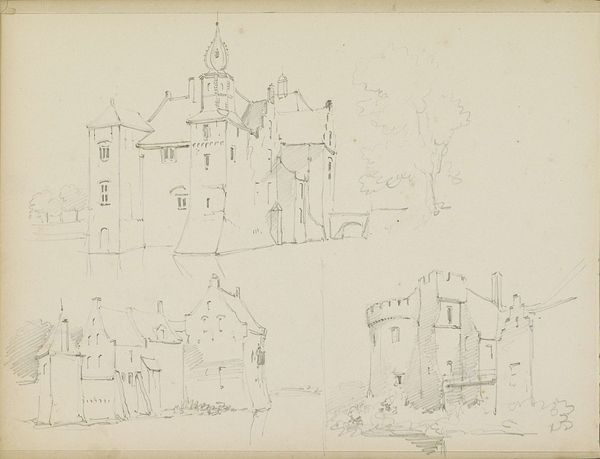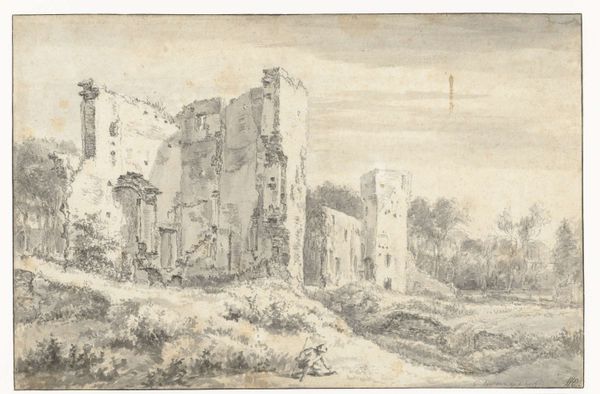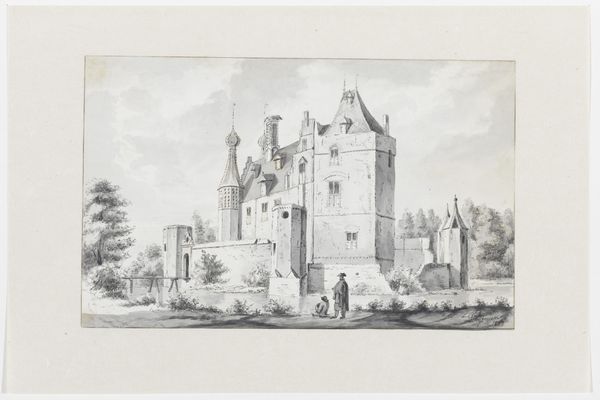
drawing, ink, chalk, architecture
#
drawing
#
baroque
#
landscape
#
ink
#
chalk
#
14_17th-century
#
architecture
Copyright: Public Domain
Curator: Welcome. We're standing before Roelant Roghman's drawing, "Ruine von Schloss Waardenburg," held here at the Städel Museum. The medium includes chalk, ink, and perhaps some graphite. Editor: There’s an immediate stillness and decay emanating from it. The ruin’s jagged edges contrast with the rounded turret; the varying textures of stone, vegetation, and sky suggest the passage of time. Curator: Roghman, active during the Baroque era, situates this ruin within a landscape tradition rife with symbolic meaning. The depiction of decay often served as a reminder of the transience of worldly power. Castles represented authority, feudalism, the state. Their decline speaks volumes about societal shifts. Editor: I agree. Structurally, the play of light and shadow creates depth. Notice the vertical lines of the ruined walls, sharply delineated, that lead the eye upwards. But, consider how they fragment; visually speaking, this communicates impermanence. Semiotically, we see this echoed throughout the image. Curator: Indeed, it’s vital to also examine the social underpinnings. These landscapes, while seemingly objective, frequently romanticized a past that erased the realities of serfdom, peasant exploitation, and the violence inherent in maintaining such power structures. Were there forced laborers building this castle originally? Editor: Interesting. Considering composition alone, the negative space – that sky – presses down, amplifying the weight of history on the scene. And, I do feel the contrast of the textures between stone, the smoother renderings of the towers, or sky lend emotional gravitas to a physical place. Curator: Looking through a lens that acknowledges coloniality, we must ask who commissioned these images and whose stories were prioritized? Were the original stewards or local peoples considered in these depictions of 'landscape'? We need to consider absences, silences. Editor: Absolutely. Although it’s equally important to acknowledge how the image is crafted: the use of a limited palette strengthens that sense of melancholy, but look, in that front left area where there is a softer effect using the chalk. This offers an aesthetic of light; we read through it as atmosphere. Curator: By investigating the socio-historical backdrop of this work, alongside its technical elements, it's my hope that the audience can arrive at an appreciation for both its aesthetic accomplishment as well as it troubling context. Editor: This journey from purely visual analysis to social and political exploration, is not mutually exclusive, but complementary; it enables the full potential and complexity of a single artwork.
Comments
No comments
Be the first to comment and join the conversation on the ultimate creative platform.
